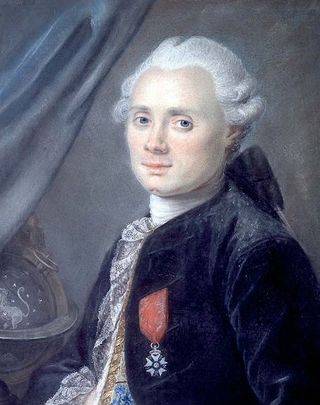Charles Messier Biography
Astronomers searching the sky for comets with the aid of early telescopes occasionally misidentified hazy, indistinct patches as distant travelers. In an effort to eliminate some of the confusion, French astronomer Charles Messier compiled a catalog of over one hundred of these objects, known as nebulae, over the course of his lifetime.

Life
Charles Messier was the tenth of twelve children born to a wealthy French family on June 26, 1730. The loss of his father at the age of eleven changed the family's financial status, however, and Messier left formal education to be schooled at home by his older brother.
At the age of 21, Messier took a position with the Astronomer to the French Navy, where he kept careful records of the observations of the heavens. Messier went on to serve as the chief astronomer of the Marine Observatory in 1759 and later became the Astronomer of the Navy himself in 1771. He became a member of the prestigious Royal Society of London in 1764.

In 1770, at the age of 40, Messier married Marie-Francoise de Vermauchampt. Tragically, his wife died in childbirth less than two years later, along with Messier's new son.
Over the course of his career, Messier discovered forty nebulae and 13 comets. He compiled a list of nebulous objects in the Northern Hemisphere known as the Messier Catalog. Messier died on April 12, 1817, at the age of 86.
Messier's catalog
In 1757, Messier began searching for a comet whose return was predicted by Edmond Halley. However, a mistake in the calculations of his employer led to the unfortunate Messier searching in the wrong patch of sky. On August 28, 1758, Messier discovered a fuzzy patch in the constellation of Taurus. Repeated observations revealed that the patch didn't move in relation to the background stars, and so was not a comet. The nebula became the first entry in his catalog, Messier 1 or M1, also known as the Crab Nebula.
The second object in his catalog, M2, was a nebula previously discovered by an Italian astronomer. With the identification of a third nebula, a globular cluster, Messier bent himself to the task of scouring the heavens for these potentially confusing objects. He later said that he undertook his search "so that astronomers would no more confuse these same nebulae with comets just beginning to appear."
Messier applied himself to the search with determination. In a seven-month period in 1764, he added 38 objects to his catalog. On March 18, 1781, Messier recorded nine new nebulae. He also began to include nebulae discovered by other astronomers.

In addition to the Crab Nebula, the Messier Catalog also contains M31 — the Andromeda Galaxy — the Milky Way's closest neighbor. The Orion Nebula (M42 and M43) and the Pleiades (M45) are also part of the list. M40 is a binary star. [Image: Spectacular Photo Reveals Bright Nebula Near Orion's Belt]
By 1781, Messier had identified one hundred and three nebulae as part of his catalog. Forty of the objects had been discovered by Messier himself. Seven objects known to have been recorded by Messier were added to the catalog in the twentieth century, with the final entry, M110, added in 1967.
Messier's catalog still functions as a useful tool for amateur astronomers scouring the Northern Hemisphere today.
—Nola Taylor Redd
Related:
- Famous Astronomers
- 50 Fabulous Deep-Space Nebula Photos
- M78 Near Orion's Belt: Sifting the Bright Cosmic Dust | Video
- Gallery: Strange Nebula Shapes, What Do You See?
Further Reading:
Join our Space Forums to keep talking space on the latest missions, night sky and more! And if you have a news tip, correction or comment, let us know at: community@space.com.
Get the Space.com Newsletter
Breaking space news, the latest updates on rocket launches, skywatching events and more!

Nola Taylor Tillman is a contributing writer for Space.com. She loves all things space and astronomy-related, and enjoys the opportunity to learn more. She has a Bachelor’s degree in English and Astrophysics from Agnes Scott college and served as an intern at Sky & Telescope magazine. In her free time, she homeschools her four children. Follow her on Twitter at @NolaTRedd
